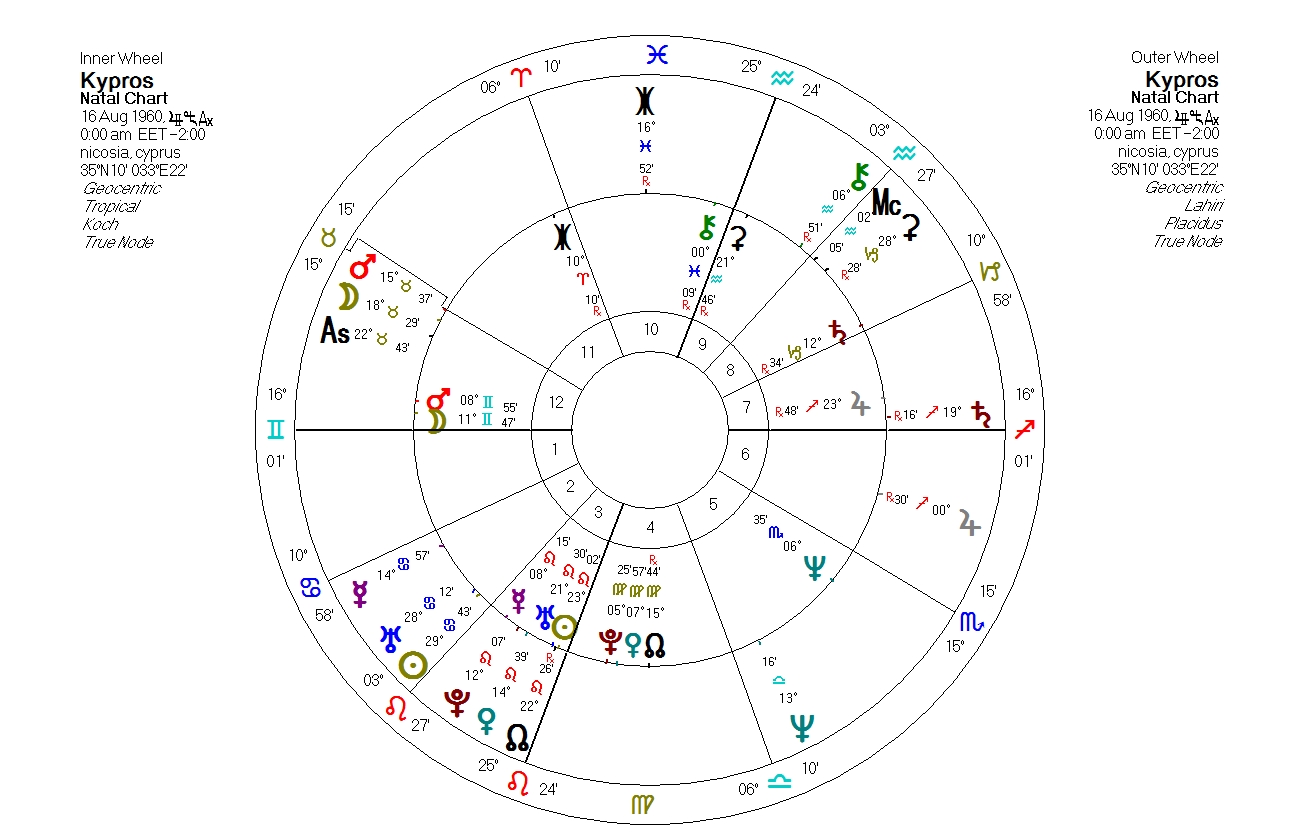The purpose of this lecture is not so much to talk about homosexuality
as to talk about homosexuality as the subject for how not to do
research. The reason why I am using homosexuality as an example rather
than certain other areas of personal interest is that it is such a
wonderful example of how not to do astrological research. Homosexuality
as a topic has been slightly controversial over the past century. Before
the last century it was simply unmentionable, so in fact this is an
improvement.
Transcribed from a lecture originally presented at the ISAR 1994 Conference.
The purpose of this lecture is not so much to talk about homosexuality
as to talk about homosexuality as the subject for how not to do
research. The reason why I am using homosexuality as an example rather
than certain other areas of personal interest is that it is such a
wonderful example of how not to do astrological research. Homosexuality
as a topic has been slightly controversial over the past century. Before
the last century it was simply unmentionable, so in fact this is an
improvement.
One of the things that has happened in astrology in topics like
homosexuality is that we have tended to follow things going on in other
areas of the world. Just occasionally we stick our foot in it. One of
the areas where this has happened historically with us is astronomy.
Sometimes we don't distinguish very well between astronomical knowledge
such as it is and astronomical theory. Some examples of that are the
fact that in the last century it was very kosher in the second half of
the nineteenth century to hypothesize an intermercurial planet. After
Leverrier was involved with the discovery of Neptune in 1848 he began
working on the orbit of Mercury which was known to be irregular. Having
just successfully predicted Neptune, he thought that he would apply
these wonderful sighting skills to Mercury.
The cultural climate of astronomy at the time was, if you have problems
with the orbit there must be something else there. They proposed what
became Vulcan. Vulcan got picked up in the astrological community. There
supposedly were sightings. The problem is that Einstein's theory of
relativity removed the need for an intermercurial planet. Astrology had
been in a position where people had been interpreting Vulcan. We still
act as if there is a Vulcan around. The people who are doing it
esoterically have a justification for it, if they wish to call it
esoteric and not on the earth plane.
OK, a brief history of homosexuality. Well, if it first was Greek, it
was good. Then it became bad. Then it became unmentionable, and then it
became mentioned. Then we hit the 19th century. Krafft-Ebing published a
book called "Psychopathia Sexualis" which everyone who wanted to be
avant garde put on their bookshelf. He went through some curious case
histories of all sorts of odd sexual practices. What developed,
primarily in Germany, was a debate around the nature of homosexuality.
Inversion and perversion at one point were technical terms. The invert
theory was that you were born a homosexual and you were in fact a member
of the intermediate sex. If you buy congenital transmission then there
is no moral dilemma about being a homosexual because you are simply
manifesting your biology. On the other hand, a pervert who was naturally
heterosexual, got hooked and became homosexual. There was a moral
dilemma associated with perversion because you did it deliberately. The
debate between the two was whether all the homosexuals were one or the
other or there was a mixture. It sounds rather like nature or nurture.
You see the controversial areas now in subjects like intelligence.
Homosexuality is another example.
What I am presenting here, is the Kinsey scale. I also sometimes refer
to this as the diagram from St. Exupery's "Little Prince" of the boa
constrictor swallowing the elephant. In the business it is called a
normal distribution and looks like the diagram at the end of this
article. It is also called a bell-curve. The idea is, that in any kind
of distribution, and in any kind of sample that has a normal
distribution, most of the people are in the middle and then you have
people on the extremes. This is also a theory used for intelligence and
for many other qualities. I have also drawn in a dotted line to
represent more of what the population looks like for homosexuality.
In Kinsey's scheme zero was 100% heterosexual. Kinsey's original scheme
dropped actual sexual practice and later people modified it to include
fantasies and other such things, but in this case, the skewing is skewed
at the heterosexual end. Whether this is in fact a societal skew or an
actual skew is up to you to determine because nobody else knows.
Before we go into some of the astrological theories, I want to point
out something about probability. Virtually any astrological statement
that you make can be modelled mathematically. This should not be a major
revelation. We work with a 360 degree coordinate system. Even if we do
things like essential dignities, those can translate into a 360 degree
system and hence we are able to extract certain kinds of mathematical
derivations from that. When you make a statement that people who have
heart attacks during their 50's tend to have the Sun conjunct Uranus,
this is a statement which is potentially quantifiable. All you basically
have to ask is, what orb do you want? You may be aware from time to
time people have suggested that homosexuality has something to do with
Uranus. Mythologically that has certain interesting ideas too, perhaps
this relates to the intermediate sex idea. In the 19th century when they
were showing pictures of inverts the men tended to look like women and
the women tended to look like men. Perhaps that does have to do with the
castration myth of Uranus.
If we just look at aspects of the Moon to Uranus, I simply say, OK,
let's see what would be the probability of only three aspects: the
conjunction, the opposition and the square. Now we define the orb. If
you say arbitrarily that you want a 7 degree orb, this in fact means you
have 7 degrees on each side. If we add up what this means, you have a
conjunction of 7 degrees on one side and 7 degrees on the other side,
totalling 14. Opposition is the same, 7 degrees on each side, totalling
14. Two different kinds of squares total 28. With every aspect except
the conjunction and opposition you have two ways to get it. We are
simply adding up the numbers which total 56. Now I simply divide that
number by the 360 degree circle and come up with the fact that if you
were working with a 7 degree orb for only three aspects mentioned here
that the probability of anybody having that is about 15%. If you start
to multiply the number of allowed planets, so now you are not just
saying the Moon, but you are saying the Sun and the Moon, Mercury,
Venus, Mars you are multiplying the percentage of your universe that is
going to have that in any case.
The next thing I am going to show you is, if you drop the orb size to 5
degrees, you are down to 11%. If you increase it to 10 degrees, you are
up to 22%. Here is the problem. This says nothing about what an
effective orb is. In fact you may be working with people natally and you
may be able to see that a 10 degree orb works in the particular thing
at which you are looking. If you are trying to do anything that
resembles a quantitative study you are going to have problems, because
already one-fifth of your sample with one planet would, with what most
of us would consider a restrictive aspect, have that. The most
optimistic estimate of the percentage of gay people in the population is
10%. That is probably high. Kinsey's numbers were inflated because he
used a large percentage of men who were incarcerated. Men who are in
prison have limited sexual opportunities. He was counting practice, not
preference. That tended to increase the numbers. The real number is
probably in the range of 2-4% depending on how you define bisexual. This
becomes a problem. Even with a 5 degree orb you are looking at a
percentage just by chance; that is exceeding the size of your
population.
One of the most important things you need to know in designing a
research project, is what percentage of the population are you talking
about? If you are talking about: "Will the people in the sample die?"
You have a percentage of 100% There aren't too many other conditions
that have 100%. Very often when people design studies especially when it
has to do with the medical issue, they in fact, do not have a clue as
to what that actual number is.
I have mentioned that there has been these various theories about
Uranus etc. The first work on homosexuality which unfortunately the AFA
has chosen to keep in print is the work of Karl Guenter Heimsoth. He was
an interesting character, historically. He ended up a victim of
persecution by the Nazis. His work on homosexuality dealt with that
wonderful concept, "latent". His entire sample of homosexuals was
defined by, who he thought was, and not on who actually practiced. I
recommend this. When you really have a theory to push, you define who
matches the sample. It makes it so much easier. His idea was that
homosexuality was naturally ectomorphic and so men who had high numbers
of Gemini and Sagittarius were gay. If you saw a chart of somebody with a
large count of Gemini and Sag, you simply called them "latent" if they
didn't admit to it. Probably, if they did not have it and they were
practicing it, they weren't really gay, so don't worry about it.
These particular aspects that are in the diagram were taken from
Ebertin's The Combination of Stellar Influences. Unfortunately,
Ebertin's work uses words like perversion. It is a little hard to tell
which meaning he meant because unfortunately as we know, perversion is
no longer a technical term. We will assume he meant this.
I had been given a set of roughly 750 gay men from Robert Jansky which
is in the IDEA data base, as are the lesbian samples noted here. I
basically looked to see whether there was in fact any relationship
between having aspects of some of the inner planets to Uranus and
Neptune or Venus, and Mars. These were things I pulled out of Ebertin's
midpoints. I looked to see if there was an elevation in these gay sample
charts. Based on orb sizes I came up with a probability of 8.8%. P is
for probability, generally expressed as a percentage but occasionally as
a decimal. As you can see using that and testing it, the collective
pooled samples, were low. Not only are we a little questionable in terms
of our random percentage but our actual percentage is just on cutting.
So, no cigar.
I mentioned that P is this wonderful probability term. Let me define
that a little more specifically. Probability is your observed frequency
divided by the total frequency. When you talk about statistical
significance, chi square, all you are basically saying is, that you
think what you are observing differs from chance and it is expressed as a
percentage. For example, when you have a 5% level of statistical
significance, you are allowing yourself to be wrong 5% of the time. When
you are doing this, do not treat it as certainty because these are all
based on the original development of gambling techniques.
This is slightly a more complete listing on the Ebertin perversion
aspects as well as some midpoints that I show you at the bottom. You can
see the data is not matching the model. Unfortunately because of the
interest of some people in trying to come up with psychological models
where they set it up with a psychological theory of "your mother did
it", they came up with some extensive modeling ideas. The problem is
that what people will say is "Well you could have a situation where the
ruler of the 12th house is afflicted." You turn around and say, "OK what
constitutes affliction in the 12th house?"
Let me show you an example of the Jansky-Nauman hypothesis. This was in
"Mercury Hour" about 15 years ago. How can you have a connection
between Uranus and the 8th house? You can have Uranus in the 8th house.
If you are using modern rulership, you can have Uranus ruling the 8th
house. You can have Uranus in a hard aspect to the ruler of the 8th
house or to the cusp of the 8th house. Do you see how you multiply
factors? Then you have the 8th house antagonistic to the 5th. Multiply
that out. You have four different ways you can do that.
Again for Mars or Pluto related to the 12th house, you have them in the
12th house, ruling the 12th house, square or in hard aspect to the 12th
house ruler or to the cusp of the 12th house. We have a little problem.
When you have four factors and commence the model, making a statement
that any of these can apply, that means I can say that I am currently in
Chicago, New York, San Francisco or Miami. One of those will be true.
If all of those were true, my frequent flyer account would be much
better than it is. The problem is that it gives you too much of a range.
In this particular case they propose a model which is met by 90% of the
population. Then they said, 90% of our charts match this. Wow!
I checked it out and came up with what you would expect. If you propose
something with a lot of different ways to do it, you are going to come
up with a model that everybody is going to match. You could in fact
propose a model for homosexuality that was randomly met by 90% of the
population, if in a homosexual or gay grouping, maybe it would be
matched 92% of the time. If you are talking to clients, which would not
be especially helpful but it is possible that it would be true. The only
way you would know that that would be true is if you had a sample size
in the tens or possibly in the hundreds of thousands because the
deviation from your expected value is low.
This is in fact one of the criticisms that Geoffrey Dean has made of
the Gauquelin results. The Gauquelin results are statistically
significant. They are repeatable. If for example you are looking at the
sports champions, there is a peak of Mars diurnally in the 12th house.
Every time you see Mars in the 12th house in a client's chart, are you
going to say: "You are going to be a sports champion." No. One of the
lessons of statistical studies is: A statistical study is not predictive
in the immediate moment. While I am delighted that the Gauquelins have
spent all the time that they did on the studies and I am delighted that
there are positive results, the reality is that a statistical study is
meant to be a characterization of the population. You cannot take a
statistical study and apply it directly to the single case that is
sitting across the table from you. You have two different lenses on
reality. You have the broader lens where you can see patterns as you do
in the Gauquelin studies that can be repeated, and you can see a pattern
or you can see an evolution of a pattern.
For example the Gauquelin's original idea of a scientist was from the
Academy Francaise for which the major criterion was living into at least
their 70's and preferably their 80's. Your colleagues would not vote
you in until you were well past the stage where you were an active
producing scientist. A funny thing happened: Saturn showed up in the
study. If you now took a sample of the National Academy of Scientists,
as in the United States where the average of induction is more like in
the 40's, we might see a different pattern. In either case, having the
pattern does not predict the individual chart. This is the take-home
lesson. There has been a lot of proposals of psychological factors in
homosexuality. If you are interested in this I have a couple of articles
where I have run through all of them and this (points to blank board)
is my model. It is the only one that works.














